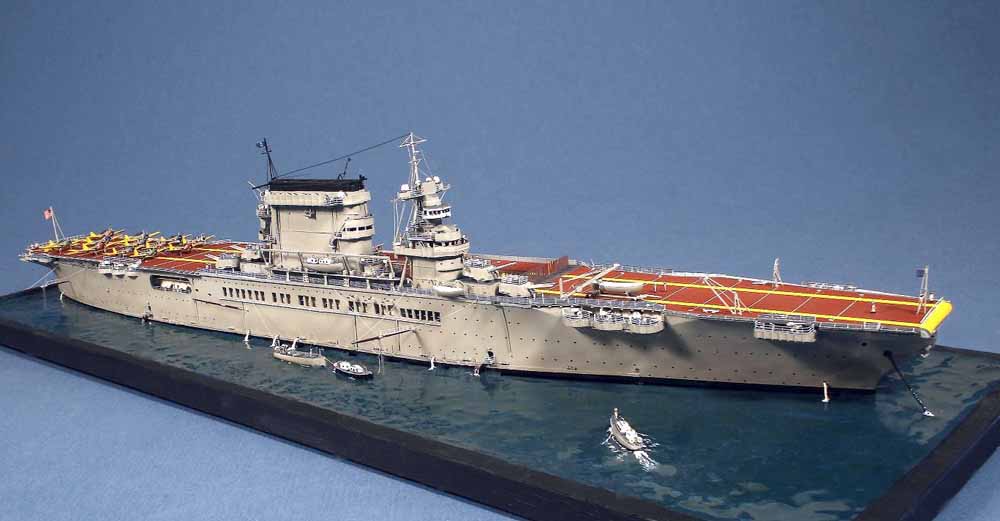by John Leyland

1/700 USS Lexington CV-2 (Fujimi)

The USS Lexington model represents US Naval aviation in the late 1930s. This is the first model of my "adult" modeling career. I started this model on the day in 1977 when I received notification that I had passed the oral exam of the American Board of Anesthesiologists and so could again devote time to something other than family and study. The 1930's have always been my favorite period of naval history. The model was updated about ten years ago using photoetch parts to replace some sprue details of the original and the flight deck was correctly painted. All cast detail was removed from the hull, the armor belt and fasteners were added and portholes drilled out. The boat pockets had the catwalks, railings, and boats or empty cradles added. The flight deck was sanded almost smooth and cat tracks were filled. At this point I bought my first airbrush, a Paasche H, which I still use today. I was very lucky that the Pactra Rebel Gray used for my first attempts worked well. I felt as though I had a magic wand which when pointed at the model magically changed its color. I was not so lucky with references. The only book available dealing with USN camoflage convinced me that the flight deck should be dark gray with white stripes. Oops! The deck edge safety nettings were done using sprue and fine lace from a sewing store. The palisade uprights are paper strips. The 5/25" and 3/50" guns were scratched. I used the five 3/50" because they appeared on the USN plans from Floating Drydock. I was sceptical, as no available photographs showed them, but hey, these are "official plans". IPMS judges proved even more skeptical. It was years later when Robert Stern published his reference that I could finally confirm that they were in fact added, but not until Oct 1940, in place of 1.1"'s which were not yet available. The bridge portion of the island was detailed with some levels scratched. The stack was sanded to remove heavy detail and the cap was scratched, as were all the attached bridge levels and the 50cal. The open boats were detailed from various kits and the closed boats were carved from wood. No correct aircraft were commercially available. The F3F fighters were carved from Wildcats and then converted to biplanes. The Vindicators were reshaped from "Kates". The Devastators were carved from Avengers, a surprisingly easy job with a three view drawing and lots of scraping with a no.11. Since I hadn't heard of resin casting, each plane was done individually. The water is clear casting resin. It was dyed with an inklike fluid added when the resin was mixed. I have never encountered a more toxic smelling substance, ever in anesthesia! It is almost impossible to texture, as it seems to harden from the bottom and then break up into cubes like jello if it is stirred. I mention it here only to warn newcomers and highly recommend Liquitex acrylic gel medium. Crewmen were based on armatures twisted from fine wire and coated with dilute "green stuff". I hope this "old time stuff" isn't too boring, but this is how it was done before photoetch and finely detailed aftermarket parts and with only the old Scale Modeler magazine as a guide.
